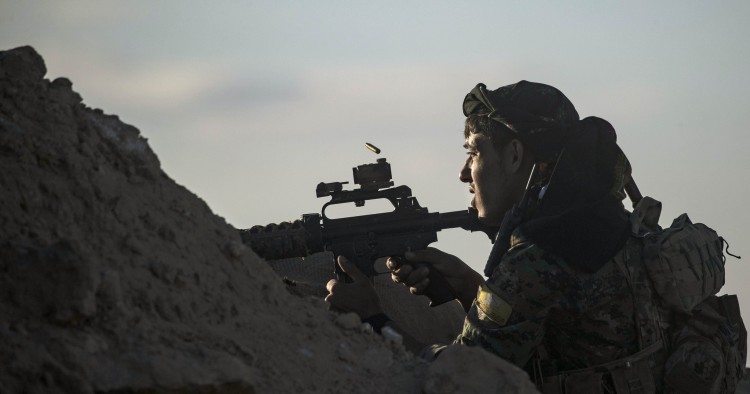This article was first published on Politico Magazine.
Just two weeks after President Donald Trump triumphantly declared the “100 percent” defeat of ISIS’s caliphate, his national security advisor, John Bolton, admitted on television that “the ISIS threat will remain” and that this explained why a small “observer force” would now stay in Syria. Next, senior administration officials announced that 200 U.S. troops are set to stay in northeastern Syria as part of a “multinational observer force,” with another 200 to remain in al-Tanf, an encampment near the border with Iraq, to deter Iranian behavior. Then on March 17, the Wall Street Journal reported that the U.S. military was “crafting plans to keep nearly 1,000 forces in Syria” in what the newspaper described as “a decisive shift away” from Trump’s order to withdraw.
This is the hopeful story that hawks within the Trump administration are selling. Indeed, the media appears to have become the platform of choice for the many serving government officials who are trying to coerce a reversal in Syria policy. The reality is in fact more complex and less promising.
First, the Tanf deployment depends heavily on Jordanian support, which is far from guaranteed given the Jordanian government’s intensive investment in re-engaging with the Assad regime. In Iraq meanwhile, U.S. troop levels remain the same, but a new Iran-backed campaign is underway in parliament to eventually force America’s departure.
Photo: DELIL SOULEIMAN/AFP/Getty Images
The Middle East Institute (MEI) is an independent, non-partisan, non-for-profit, educational organization. It does not engage in advocacy and its scholars’ opinions are their own. MEI welcomes financial donations, but retains sole editorial control over its work and its publications reflect only the authors’ views. For a listing of MEI donors, please click here.













